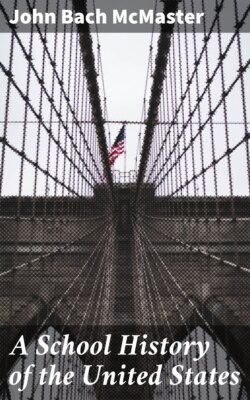Читать книгу A School History of the United States - John Bach McMaster - Страница 3
На сайте Литреса книга снята с продажи.
PREFACE
ОглавлениеTable of Contents
It has long been the custom to begin the history of our country with the discovery of the New World by Columbus. To some extent this is both wise and necessary; but in following it in this instance the attempt has been made to treat the colonial period as the childhood of the United States; to have it bear the same relation to our later career that the account of the youth of a great man should bear to that of his maturer years, and to confine it to the narration of such events as are really necessary to a correct understanding of what has happened since 1776.
The story, therefore, has been restricted to the discoveries, explorations, and settlements within the United States by the English, French, Spaniards, and Dutch; to the expulsion of the French by the English; to the planting of the thirteen colonies on the Atlantic seaboard; to the origin and progress of the quarrel which ended with the rise of thirteen sovereign free and independent states, and to the growth of such political institutions as began in colonial times. This period once passed, the long struggle for a government followed till our present Constitution—one of the most remarkable political instruments ever framed by man—was adopted, and a nation founded.
Scarcely was this accomplished when the French Revolution and the rise of Napoleon involved us in a struggle, first for our neutral rights, and then for our commercial independence, and finally in a second war with Great Britain. During this period of nearly five and twenty years, commerce and agriculture flourished exceedingly, but our internal resources were little developed. With the peace of 1815, however, the era of industrial development commences, and this has been treated with great—though it is believed not too great—fullness of detail; for, beyond all question, the event of the world's history during the nineteenth century is the growth of the United States. Nothing like it has ever before taken place.
To have loaded down the book with extended bibliographies would have been an easy matter, but quite unnecessary. The teacher will find in Channing and Hart's Guide to the Study of American History the best digested and arranged bibliography of the subject yet published, and cannot afford to be without it. If the student has time and disposition to read one half of the reference books cited in the footnotes of this history, he is most fortunate.
JOHN BACH McMASTER.
